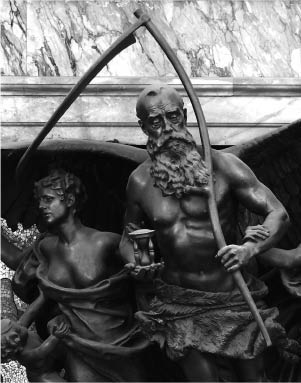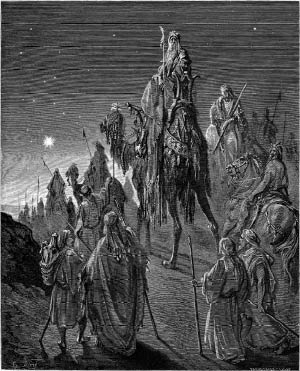Illustrations
In his book Cosmographia, published in 1585, astronomer Peter Apian included this diagram illustrating the pre-Copernican universe. The seven planets are shown orbiting the Earth in the following order: Luna (Moon), Mercury, Venus, Sol (Sun), Mars, Jupiter (sometimes called Jove), Saturn. It is these seven planets that give us the names of the days of the week.

This woodcut by Hans Sebald Beham (1500–1550) portrays Jupiter enthroned in the heavens and some of his influences on earth. Jupiter inspires coronation (foreground), judgment (middle left), and hunting (background). (Photo: Warburg Institute.) The Lion, the Witch and the Wardrobe is a Jovial story full of kings and queens, forgiveness, the passing of winter, and the hunting of white stags.

This fresco, located in the Casa di Venere in Pompeii, shows Mars in his capacities as god of war (Mars Gradivus) and god of woods (Mars Silvanus). Prince Caspian is a Martial story, full of trees and forests, battles and knights, including that most knightly figure, Reepicheep, the “martial mouse.”
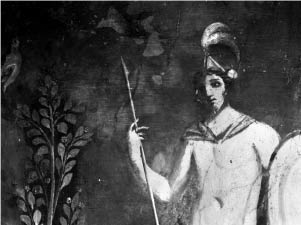
Apollo, the god of light or the sun, was sometimes known as Sauroctonus, the slayer of lizards or dragons. This is a copy of a bronze statue from the fourth century BC by Praxiteles, in the Vatican Museum in Rome. (Photo: Warburg Institute.) The Voyage of the “Dawn Treader” is a Solar story, full of sunlight, gold, and adventures with dragons.
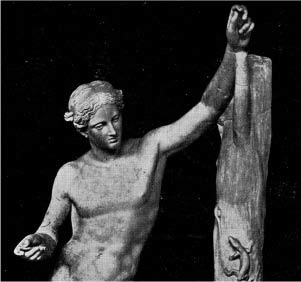
Luna, the moon goddess, in her chariot that she drives across the heavens, marking the boundary between the constancy above and the confusion below. Bas relief in the Malatestian Temple, Rimini, Italy, created about 1470. (Photo: Warburg Institute.) The Silver Chair is a Lunar story, full of wanderings, wetness, silver, lunacy, and the horses Coalback and Snowflake.
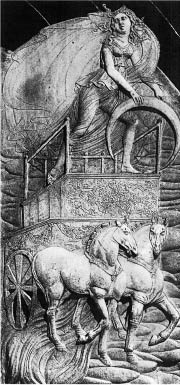
Mercury, the winged messenger, is the subject of this copy of a statue by Giovanni da Bologna (c. 1524–1608), which was erected in Tom Quad, Christ Church, Oxford, in 1928. (Photo: Michael Ward; used by permission of Christ Church.) The Horse and His Boy is a Mercurial story, full of running heralds, wordy characters, winged caps, and comings and goings.
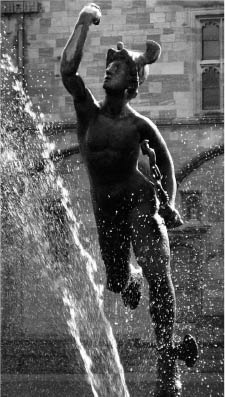
Venus, source of sweetness, creativity, and laughter, holds an apple in this oil painting by Bartholomeus van der Helst (1613–1670), located in the Musée des Beaux-Arts near Lille, France. The Magician’s Nephew is a Venereal story in which Narnia is created, the first joke is told, and a magic apple brings life and health.
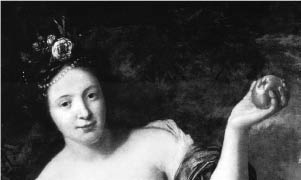
This sculpture was created by John Flanagan (1865–1952) and stands in the Library of Congress in Washington, D.C. (Photo: Carol Highsmith.) “Our traditional picture of Father Time with his scythe is derived from earlier pictures of Saturn,” Lewis writes in The Discarded Image. The Last Battle is a Saturnine story in which Father Time brings Narnia to an end.
